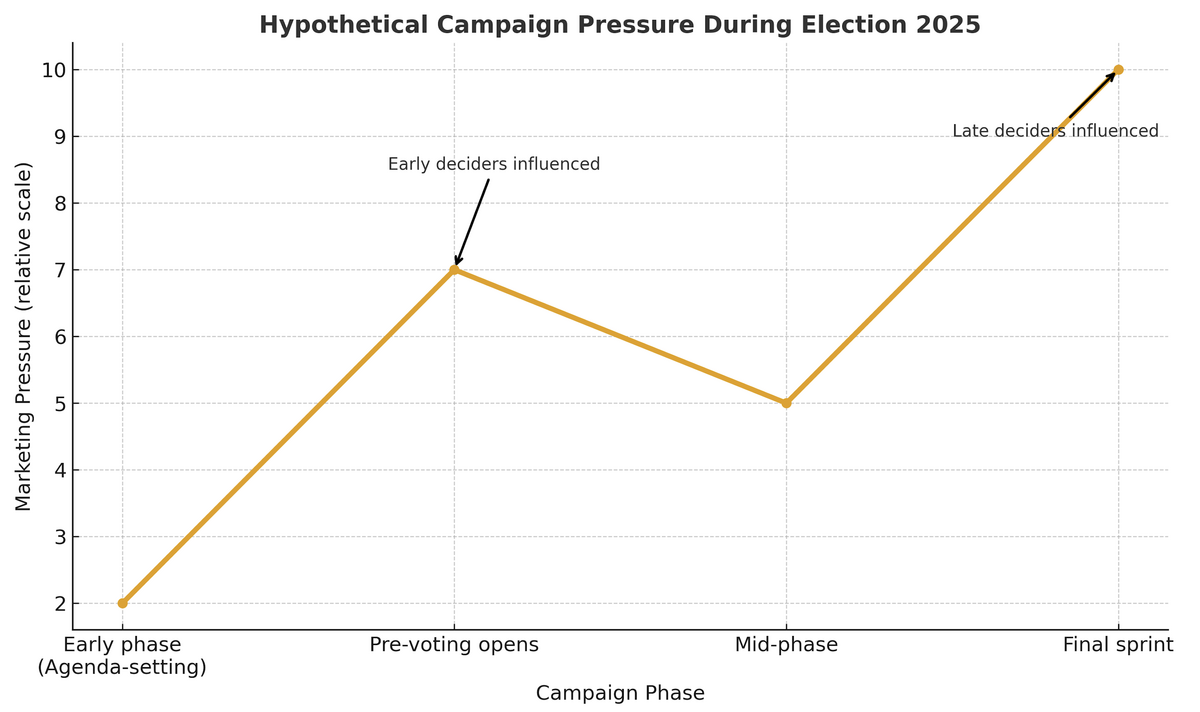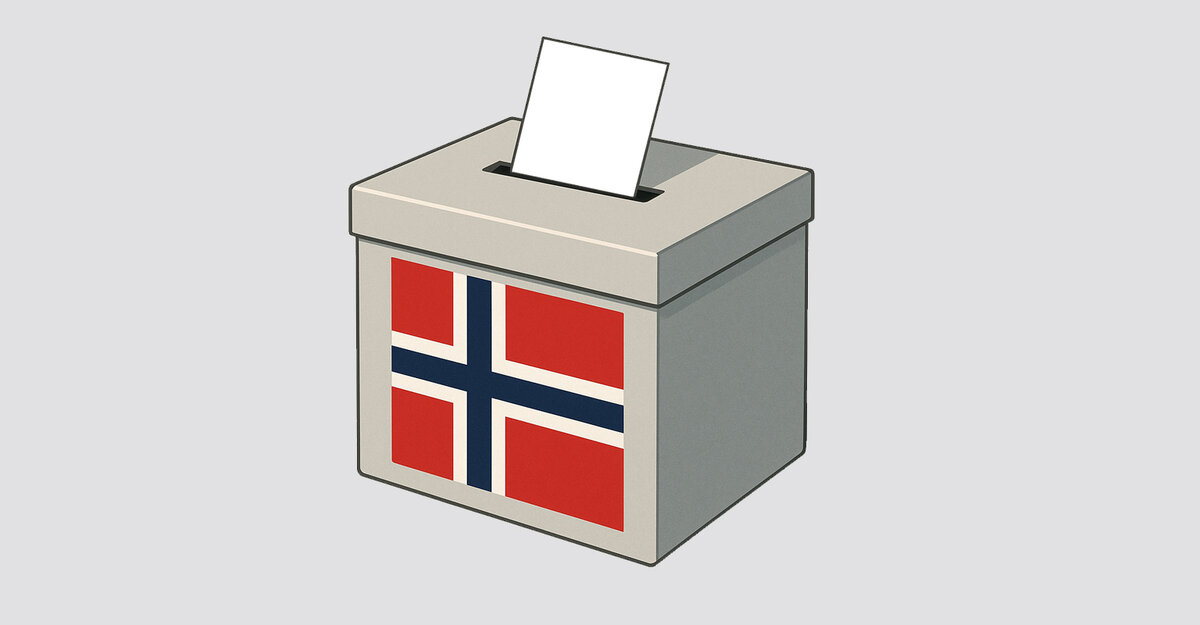What Norway’s 2025 Election Can Teach Us About Smarter Political Marketing
The election is over. Congratulations to Arbeiderpartiet on their victory. But beyond the results, this year’s campaign leaves us with an important question: did the parties spend their marketing budgets in the smartest way possible?
With millions invested in digital advertising, the patterns we saw reveal something crucial: Norwegian parties could achieve far greater impact, not just by how they market but by when.
A changing voter journey
In 2025, nearly half of voters cast their ballot before election day. Pre-voting has grown steadily over the past decade, and the trend shows no sign of slowing.
This means that a significant share of the population makes up their minds weeks before the final campaign sprint.
The traditional campaign curve
For years, campaign pressure has followed a predictable rhythm:
Quiet start – Agenda-setting, brand building, low budgets.
Mid-phase – Pressure rises as pre-voting opens.
Final sprint – Historically the highest ad spend, targeting undecided voters in the last 1–2 weeks.
This model made sense when most people voted on election day. But in 2025, it risks leaving a quarter of voters untouched by the most expensive campaigns.
Two peaks, not one
Our hypothesis is clear:
Phase 1 (agenda-setting): Low impact, but frames the debate.
Phase 2 (pre-voting opens): High impact on early deciders.
Phase 3 (mid-phase): Stabilizes visibility, but fewer undecided voters remain.
Phase 4 (final sprint): Still crucial for last-minute deciders.
Campaigns now have two critical peaks: when pre-voting opens, and in the final sprint.

Insights that make planning easier
In the Kobler platform, it’s easy to see what is trending in the news and how reading patterns have developed over the past 12 months. You can zoom in on the whole year or specific time periods, and even filter by media and topics.
In fact, the hypothesis is backed by insights from the Kobler platform: from as early as January to March and up to the first peak, and again between the two peaks, reading volumes on political topics are significantly higher than normal. These patterns make it easier to identify the moments when campaign pressure has the greatest impact.
This kind of insight is crucial for making the best strategic decisions, like knowing when to launch your campaign and when to turn up the pressure.
Why do parties still save everything for the end?
Voter psychology: Many decide last-minute.
Media logic: Coverage intensifies close to election day.
Tradition: Parties “save the gunpowder” until the finish line.
With pre-voting steadily increasing, already more than one third of voters in 2021 and over 40% in the 2023 local elections, it’s likely that future national elections will see close to half of all votes cast before election day.
If that trend continues, the old approach of saving everything for the last week will soon look outdated.
The sustainability challenge
2025 also marked the last time parties could pour millions into Google and Meta. From autumn onwards, EU’s TTPA regulation takes effect. Instead of adapting, Big Tech chose to ban political ads altogether.
Rødt stood out as the only party that refused to spend on Meta and still came out on top digitally.
Most others used their “last chance” to fuel Big Tech’s profits.
For parties that claim to protect democracy and privacy, this raises an uncomfortable question:
Are your actions aligned with your values?
Learning from Norway – and looking ahead
For Sweden and Denmark, with elections in 2026, there’s an opportunity to learn from Norway’s experience:
Shift budgets earlier to reach the growing share of early voters.
Choose contextual advertising as a sustainable, privacy-friendly alternative.
Support quality journalism instead of platforms repeatedly fined for privacy violations.
Walk the talk
The 2025 election showed us both the power and the pitfalls of political marketing.
Moving forward, parties must make a choice:
Stick to outdated strategies, focusing most of the budget at the very end of the campaign, even though many voters have already voted earlier.
Or rethink the approach: spread budgets more wisely, embrace contextual advertising, and align values with actions.
Because every ad placement is more than a tactic. It’s a statement.
Let’s build a future where both brands and democracies can thrive.
Reach out today. We would love to help you make smarter, more meaningful ad choices for your brand.
Kobler
matches ads
with content
Wonder how to start using contextual marketing? Contact one of our advisers!

- Sales Manager
- eirik@kobler.no
- +47 414 60 561

- Nordic Key Account Manager
- josefine@kobler.no
- +47 934 56 430
